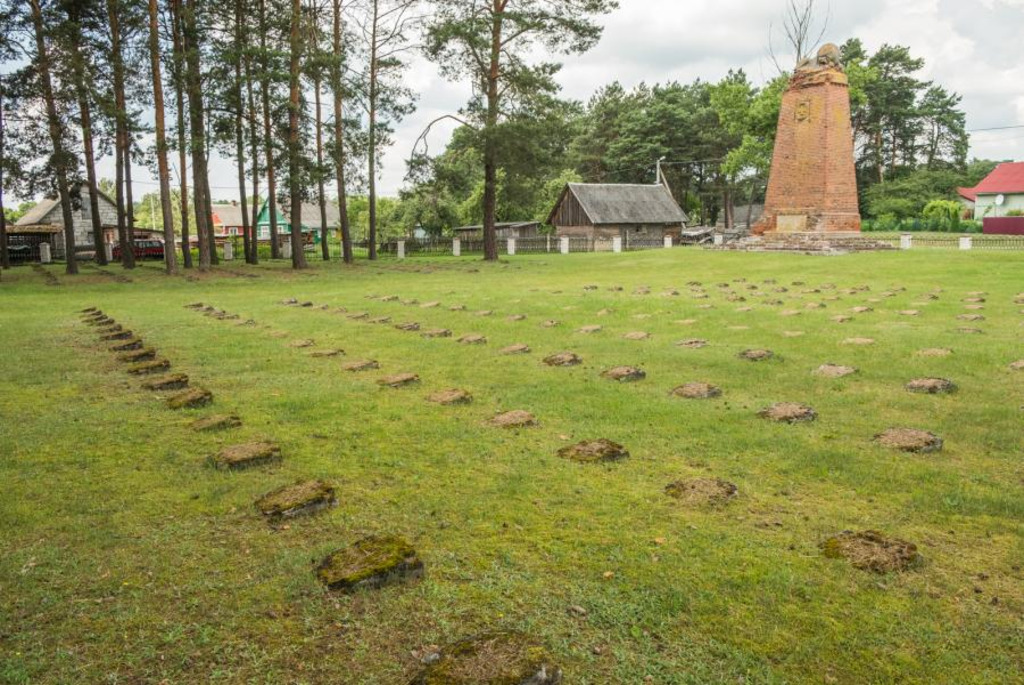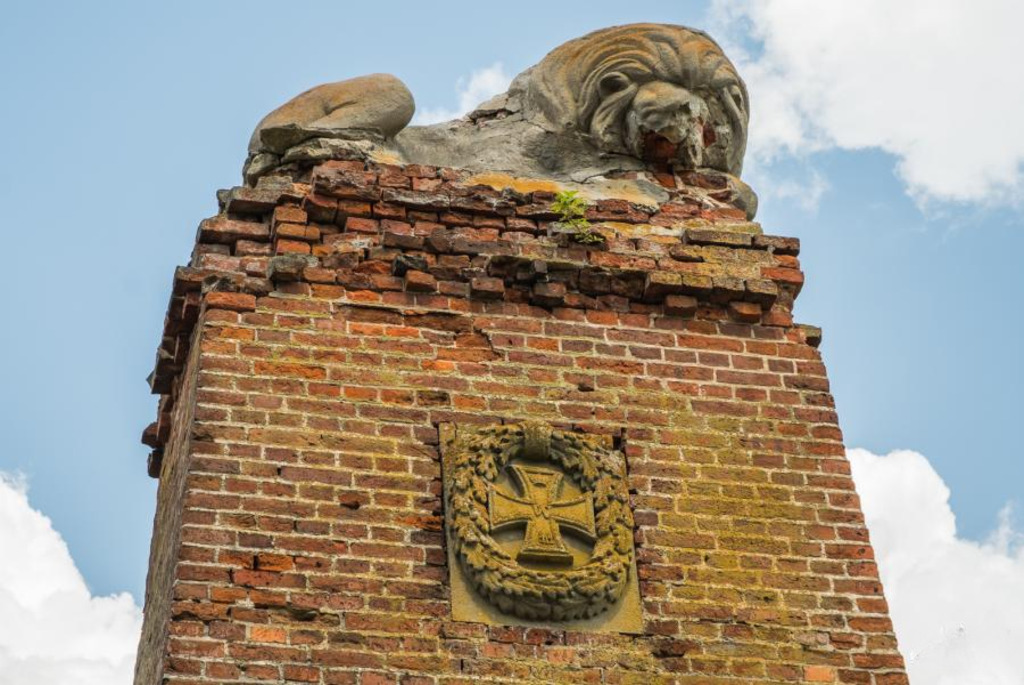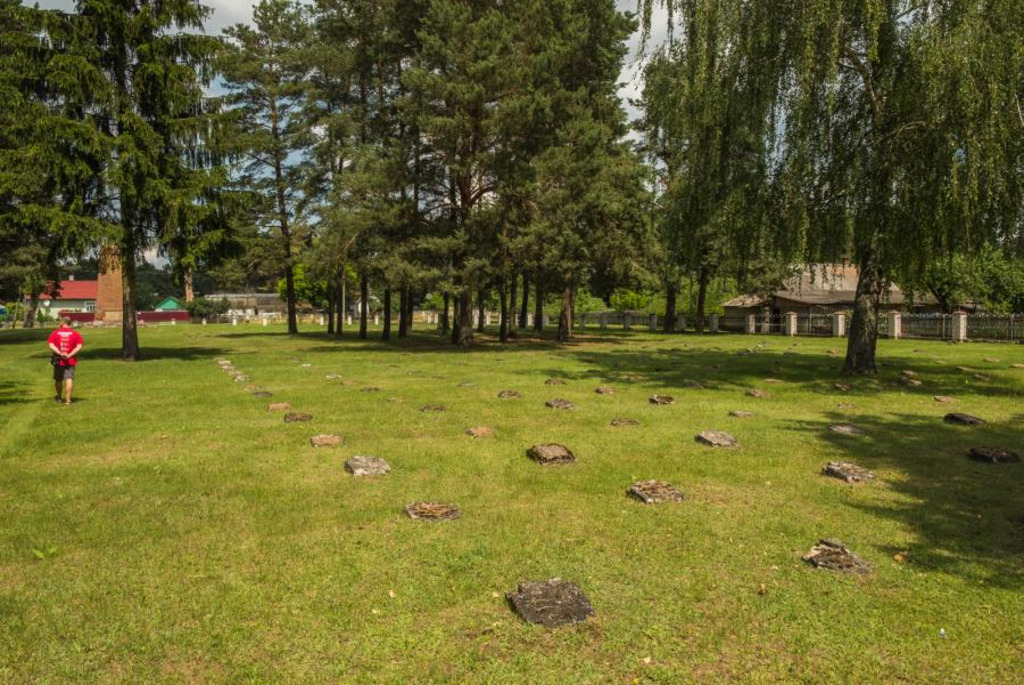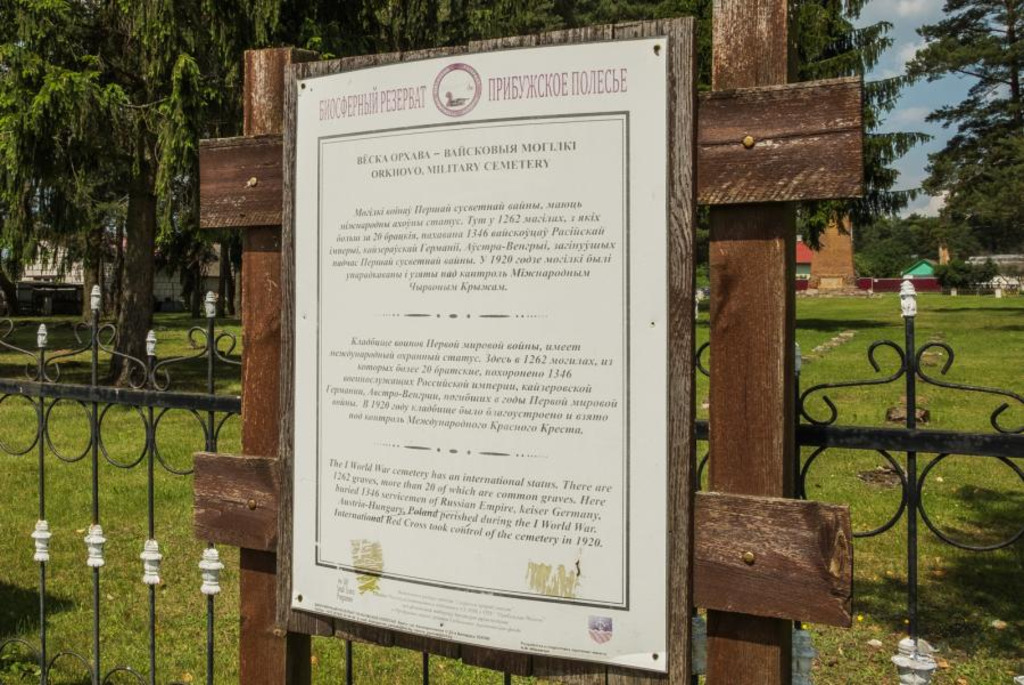Historical background
During World War I, the Brest region became a scene of intense fighting. Near the village of Tomashovka, close to the Włodawa railway station, the front line passed. In 1915–1916, fierce clashes took place here between Russian troops and the combined forces of the German and Austro-Hungarian Empires. More than 1,300 soldiers lost their lives, and their bodies were laid to rest near the battlefield.

In 1919, through the initiative of the Polish state and with the support of the International Red Cross, the cemetery was arranged: the graves were marked with concrete crosses bearing soldiers’ names, the area was surrounded by a stone fence, and in the center a brick obelisk was erected, crowned with a figure of a lion. The reclining lion became a symbol of grief and eternal rest, while the iron cross on the monument reminded of the valor and honor of those who had perished.

Architecture and symbolism
The military cemetery in Tomashovka is a well-organized memorial space where every detail carries meaning. The entrance features an iron gate between massive red-brick pillars. Inside are more than 1,200 individual graves and about twenty mass graves.

The central element of the memorial is the obelisk with a lion statue at its top. In European tradition, the lion symbolizes courage and strength, while in repose it conveys mourning and reverence for the fallen. This image unites the memory of soldiers from different armies, emphasizing the universal human meaning of courage and sacrifice beyond national borders.
Some gravestones still bear inscriptions in Russian, German, and Polish – a reminder of the international nature of this burial site and of the war’s indiscriminate toll on human lives.

Protected heritage
From its creation, the cemetery in Tomashovka was placed under the protection of the International Red Cross – a unique status for Belarus. Today, it is listed among the country’s historical and cultural heritage sites and has international importance.
By the end of the 20th century, the memorial had fallen into neglect, but in the early 2000s it was restored: the fence was reinforced, the area cleaned, and the obelisk renewed. Thanks to these efforts, the site regained its dignified appearance and became once again a place of remembrance rather than oblivion.

Today the cemetery is well maintained and open to visitors. Commemorative events and excursions dedicated to World War I are regularly held here. The memorial attracts tourists from Belarus, Poland, Germany, and other countries who come to honor the fallen soldiers.
How to get there
The village of Tomashovka is located about 60 kilometers from Brest. It can be reached by road along highway R-94 or by train to Włodawa station. From there, the cemetery is just a few minutes away. The route passes through picturesque landscapes where nature and history intertwine harmoniously.

Tomashovka lies near the borders of Poland and Ukraine, giving it special geopolitical significance. This place seems to unite different cultures, peoples, and eras – a symbol of peace that grew on land once scarred by war.
Memory that lives on
The World War I Soldiers’ Cemetery in Tomashovka is more than just a historical site. It is a place where the breath of the past can be felt – where one reflects on the price of peace and the importance of remembering those who gave their lives for their beliefs.

Every year, school groups, diplomats, historians, and visitors come here. The silence between the rows of graves reminds us that war has no true victors, and peace remains the most fragile and precious of rewards.
Visiting this memorial is not only an act of respect but also a deeply personal encounter with history. Tomashovka teaches that memory is not merely a mark on stone but a living feeling of gratitude and compassion passed from generation to generation.